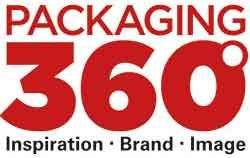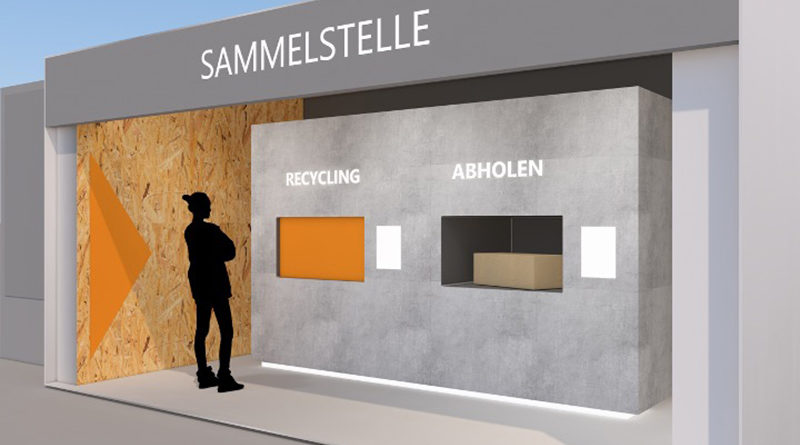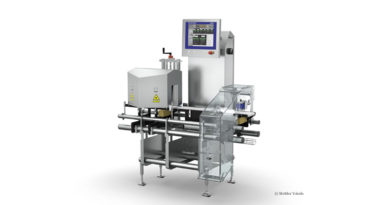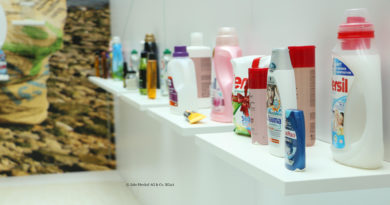Here’s What the Future of Shopping Looks Like
Experts at packaging company DS Smith say restrictions in the wake of the Covid-19 pandemic have led to a permanent shift in consumer behavior. Which type of consumer will be more prevalent in the future? Packaging experts provide answers.
The type of consumer that will be more prevalent in the future is the so-called fusion shopper: that is one of the key findings of a new survey by packaging company DS Smith. The fusion shopper distributes his or her purchases among brick-and-mortar stores, online retail and click & collect. In consequence, retailers and brands see themselves forced to keep up with the development.
The survey showed that in an average month, consumers in Germany shop in-store four times, online six times, and use click & collect three times – with the latter service growing rapidly. In fact, 60 percent of consumers who have already used the service can imagine using click & collect again, the survey says.
However, while consumers are fundamentally changing their shopping habits, experts also warn that experiences with newer channels are not always positive because of this. In fact, just under one in three (32 percent) cite online shopping as their preferred shopping method. 54 percent agree with the statement that click & collect combines „the worst of both worlds.“
To help brands adapt to their rapidly changing retail environment, DS Smith is working with behavioral scientist Professor Ivo Vlaev of the University of Warwick Business School. Vlaev explains, „People’s expectations of brands haven’t changed. But as we move to a mixed shopping model, retailers who want to retain brand loyalty among their customers need to make sure they create a consistent experience regardless of how they shop.“ For both click & collect and online shopping, packaging can help enhance that experience, he says. „For example, packaging design can help with smooth in-store payments. Click & collect can also be improved by packaging with smart, personalized IDs. This could make collection easier, faster, and even more personalized,“ he says.
Uwe Väth, Managing Director of DS Smith Packaging Germany & Switzerland, says: „Today’s consumers no longer opt for one way of shopping, but for a mix of all offers – they are the so-called fusion shoppers. The multiple offers are a real risk for brands and retailers. Customers who don’t experience consistently good service could migrate to competitors. So today, brands need to find a way to seamlessly connect their offerings, so consumers are satisfied no matter what type of shopping they choose to do. Packaging is one of the ways this can happen.“
Other findings: 38 percent of shoppers dislike being in crowded stores. Two-fifths (40 percent) of people are not willing to wait in a store line for more than five minutes. More than half (56 percent) find online shopping less stressful.
The DS Smith survey also highlights what consumers consider to be the biggest problems with click & collect offers: having to travel to a store to pick up the item they want (22 percent), having to wait a long time to pick up the product (21 percent) and concerns about the quality of the item (21 percent). When shopping online, the inconveniences of not knowing if the item fits and pleases (31 percent), not being able to assess the quality of the item (31 percent), and not being able to touch the product beforehand (29 percent) are cited as key problems.
Smart labels
To reduce this multitude of potential annoyances, DS Smith’s global innovation team and Professor Ivo Vlaev have developed concepts for future packaging that could help retailers and brands improve their mixed offerings, the company explains. Examples include smart labels or QR codes on packaging that can be easily scanned with a smartphone camera. This would eliminate the need to stand in line while shopping, as consumers could scan their items themselves and pay online. At the same time, QR codes could also be used to place further product information, offers or online advertising content.
Other forward-looking concepts involve store design and the user experience in click & collect offerings. Interactive screens, for example, could make browsing easier – even after closing time. In the case of click & collect offers, especially personalization by means of pick-up IDs has potential for saving customers waiting times and offering them.
Photo: DS Smith




